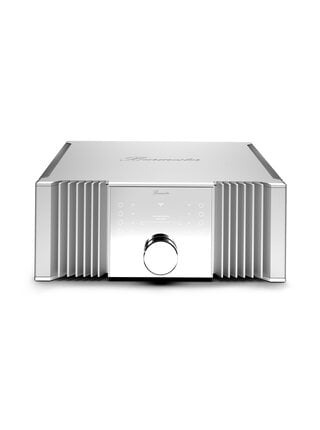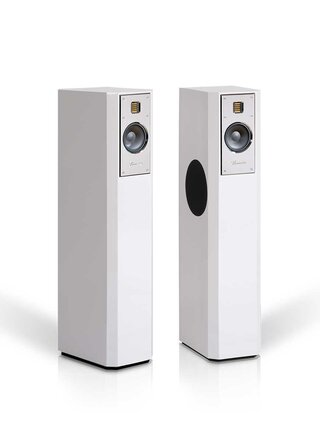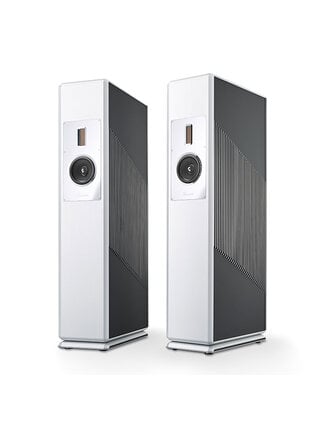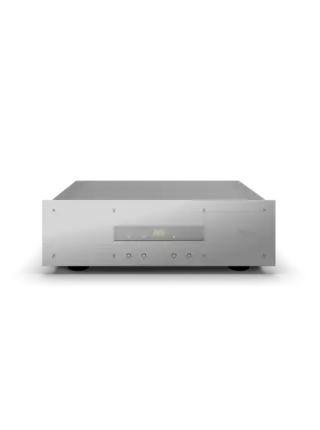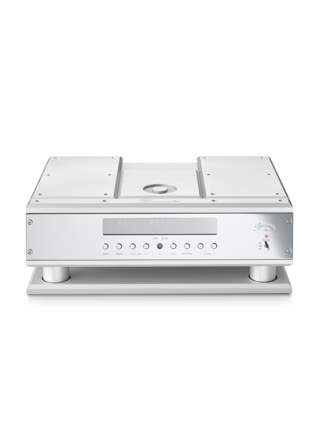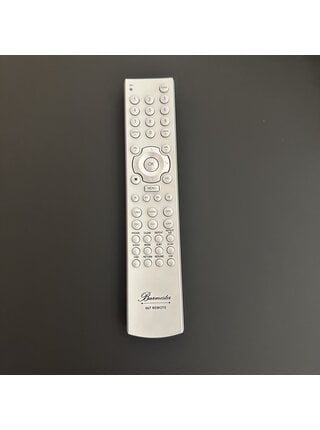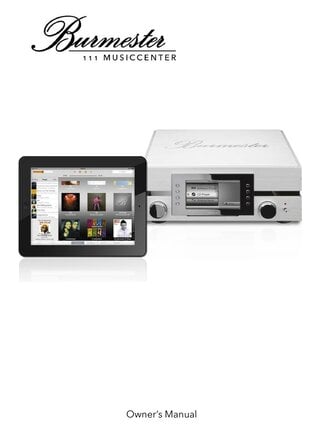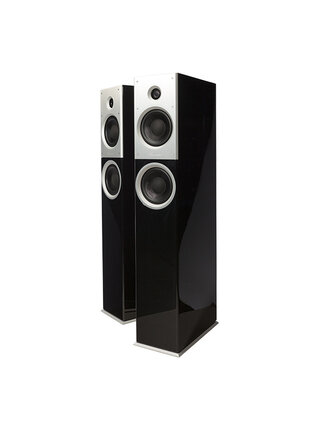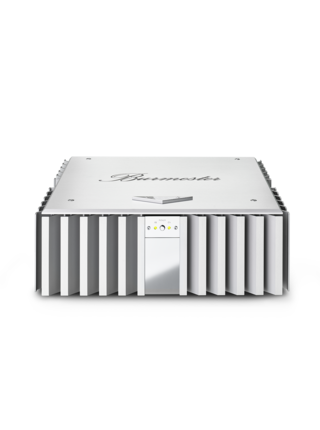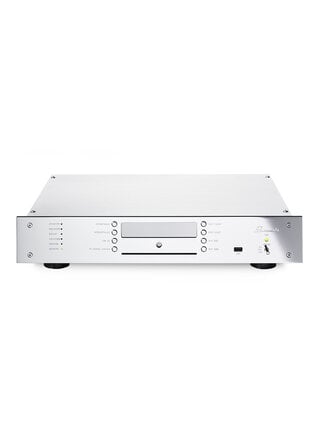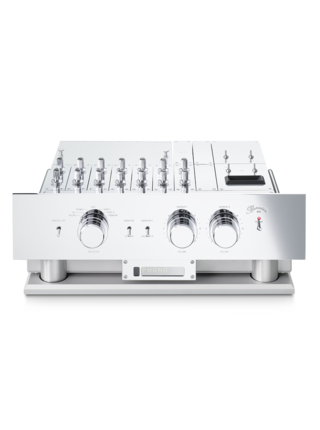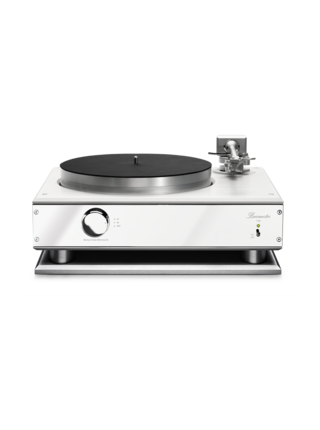With logical and self-explanatory functionality Burmester designs ease of use into every component. Their full enjoyment should not require work.
The Origins A Quest To Build The Perfect Sound
Occasionally, certain reoccurring circumstances cause you to make key decisions to head in a particular direction in life. In Dieter Burmester's case it was a tube amplifier sensitivity or susceptibility that initially determined his choice of vocational education and would later lead him establishing one of the world's most renowned hi-fi businesses.
At the age of 15, Dieter Burmester was already interested in technology and tinkering with radios.But above all he was passionate about making music.
His life may possibly have taken a different course, had he not opted to up the e-bass.
At any rate, the frequent defects that afflicted his instrument's tube amplifier played a considerable part in his decision to qualify as a radio and TV technician, which enabled him to produce his own tube amplifier for his gigs. Around 15 years later, following two years as a professional musician, an electrical engineering degree and the establishment of an engineering consultancy specializing in computer interfaces and circuit technology for medical measuring instruments in Berlin, it was the malfunction of the amplifier in his Quad system that caused him to go looking for a new amp.
Ultimately, it was his demand for quality and his spirit of innovation that led to the formation of Burmester Audiosysteme GmbH in 1978.
Had Dieter Burmester not been so exacting and at the same time so creative, he would probably not have decided to design-engineer his own amplifier. Since he no longer considered using a hi-fi amplifier featuring tube technology, given relatively severe distorsions, low damping factor compared with low-frequency membranes and rapid aging, Burmester incorporated op-amp technology, modeled on modern measuring instruments, into his amp. Ultimately it was his high quality standards and spirit of innovation that led in 1978 to the establishment of Burmester Audiosysteme GmbH and which still form the basis of the company's philosophy to this day. An unwillingness to compromise on the choice of components and the quality of workmanship combined with the principle of only launching a product if it represents a clear technical enhancement, compared with competitors' products.
As a newcomer, Dieter was up against big Hi-Fi companies.
Originally, Dieter Burmester would never have dreamed of ever setting foot on the hi-fi market dominated by big companies as an unknown newcomer. So when the bank he had asked for a loan before founding the company was not convinced of his business idea, he was not surprised.
In a very special case, however, Dieter Burmester was asked to deviate a little from his principles and rely on the tried and tested: When designing the lettering for his company, which at first glance was supposed to be associated with high quality and care, he took the typical script of traditional English companies as a model. At least that is what he believed.
When years later an old postcard fell into his hands, he was astonished to discover that the curved lettering on the Burmester devices was indeed that of his long deceased father ( who would certainly have been proud of it )
Dieter's product innovation was so far ahead of its time that it required educational work.
However, the amplifier he designed was met with such enthusiasm by his audiophile friends that Dieter, despite a price close to that of a small car, was unexpectedly confronted with more and more orders. He initially built 20 units in his workshop. Through word-of-mouth propaganda however, a dealer finally found out about his product and offered to present the amplifier in his store. In turn, a well-known Hi-Fi magazine heard about it and praised the device in a test. The steadily growing demand was then to lead to the fact that a bank loan was no longer necessary for the establishment of the company.
As it turned out, however, he was so far ahead of his time that it initially took a certain amount of effort to explain the advantages of this technology to the public. Given the lack of knowledge even among dealers and journalists, Dieter Burmester even felt compelled to publish introductory articles on the subject in trade journals. Ultimately, however, his pioneering work was successful: in the meantime, balanced connections have long since become a matter of course in high-quality devices above a certain price range.
After the overwhelming success of his first preamplifier, Dieter launched the first Hi-Fi power amplifier with balanced signal routing in 1983.
In 1987 a CD player with upsampling function followed.
However, Its D7A converter did not, as was usual in those days, come in the form of an integrated circuit but as a complex combination of individual elements, and in both technical and audio terms was comparable with today's state-of-the-art DAC technologies. Four years later Dieter Burmester then design-engineered the first belt-drive CD player. Separating the bearing from the motor prevents vibrations from the drive mechanism being transferred to the CD, which can lead to phase jitter, the distortion of the frequency components of the digitally read signal. A micro-controller ensures the CD rotates at the correct speed. This design delivers a noticaably rounder, less metallic sound. However it would take another 15 years before Dieter Burmester's sense of satifaction could be metrologically substantiated with the fact that belt-drive CD players feature by far the lowest jitter values.
1994 Dieter began to change the loudspeaker technology fundamentally.
Since he regularly had to make the experience at trade fairs that visitors who did not know his company at first turned their attention to loudspeakers borrowed from other manufacturers, Dieter Burmester decided to expand his product range in this direction in 1994. Instead of the usual dome tweeters, which he had always had an aversion to, he used so-called air-motion transformers as tweeters. The accordion-like folded membrane with conductor tracks is located in the field of a permanent magnet and is moved back and forth as a result of the current flowing through the conductor tracks when the music signal is applied. As a further special feature, he used an unusually large chassis with a diameter of 17 cm for the midrange to increase the air movement and thus the dynamics - a design that was also to be adopted by many other manufacturers over the years.
In 2002 Dieter Burmester started working with the automotive sector.
After Dieter Burmester had now rounded out the essential audio equipment for the living room in his portfolio, the step towards mobile hi-fi components followed in 2002, when he received an offer from VW to design the music system for the new Bugatti model Veyron 16.4. This was followed by cooperations with Porsche and Mercedes-Benz, who have been equipping various car models with Burmester-designed surround sound systems since 2009 and 2013, respectively.
In 2012 Dieter Burmester brought the repertoire to the digital world.
In 2012, Burmester also expanded its repertoire to include network devices in order to consistently exploit the possibilities of digital music playback. The so-called music centers, with their slot-in drives, which can be used to rip CDs to one to several terabytes of mirrored hard disks, serve on the one hand as convenient music storage devices. At the same time, they function as servers that can play files in Wav, Flac, Mp3 and various other formats at up to 196 kHz and 24 bits from various sources, play Internet radio and, if required, load album covers and title information from the network.
The devices can be operated both via web browser and an app via I-Pad, I-Pod or I-Phone. In order to develop the Linux-based programs and algorithms, which are precisely tailored to the device functions and can be adapted to future applications and customer requirements, Burmester had previously acquired a software company founded by former Apple employees.
Coincidence ended Dieter Burmester's career as a professional musician - and made room for something new on the horizon.
If his time as a professional musician, during which he had been touring various clubs in Germany with a beat band that first called itself The Echos and then Some Folks, hadn't been interrupted so abruptly at the time when he was drafted into the federal government, and if he hadn't decided to study electrical engineering in Berlin after 18 months of military service - who knows, maybe everything would have turned out completely differently. However, his career as a high-end pioneer had its downside for Dieter Burmester: he rarely got the chance to make music himself. Between 1999 and 2007, he performed every now and then with the band Past Perfect, which he co-founded, but in view of his workload as a developer and company boss, he felt compelled to quit the project.
After initially performing with the soul band The Odd Persons while still at university, he decided in 1968, when his band colleagues Bruno Frenzel and Bernd Noske suggested that he return to making music full-time, to concentrate on his degree. Noske and Frenzel, however, were to become formative members of the legendary Krautrock band Birth Control in the following years, and Frenzel became co-author of their greatest success "Gamma Ray".
On August 15, 2015 Dieter Burmester left this world suddenly and unexpected. His spirit will live on in his life's work and the company and continue to give creative impulse in the future.


